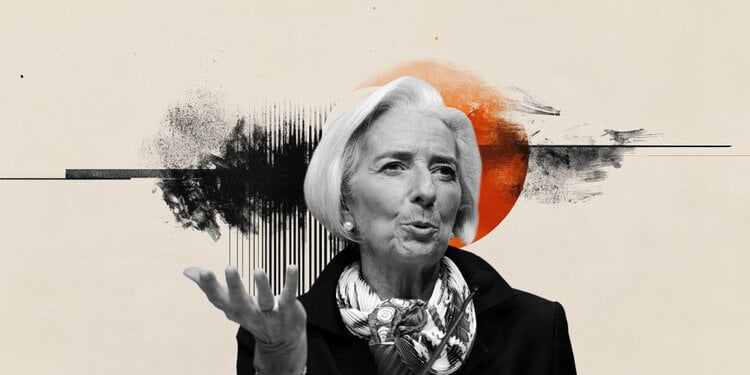- The price of gold hit a new all-time high on Thursday amid dovish expectations from the Fed.
- The USD languished near a year’s low and shrugged off Thursday’s positive US data.
- Market optimism caps XAU/USD ahead of important US Personal Consumption Expenditure (PCE) Price Index.
The price of gold (XAU/USD) extended its record streak for the fifth consecutive day on Thursday amid fresh selling around the US Dollar (USD). Even as several Federal Reserve (Fed) officials this week sought to buck expectations for more aggressive easing, markets continue to price another large rate cut in November as more likely. This overshadowed better-than-expected US macroeconomic data and weighed heavily on the Dollar, benefiting the underperforming yellow metal.
Apart from this, the lingering geopolitical tensions arising from the ongoing conflicts in the Middle East continue to drive safe haven flows and prove to be another factor acting as a tailwind for the gold price. That said, the risk-on sentiment prevalent in global equity markets – driven by China’s stimulus measures – limits any further gains for XAU/USD. Investors also seem reluctant and prefer to stay on the sidelines ahead of the release of the US Personal Consumption Expenditure (PCE) Price Index on Friday.
Daily Market Drivers Summary: Gold Price Bulls Turn Cautious Amid Risk Appetite Sentiment, Ahead of US Personal Consumption Expenditure (PCE) Price Index
- Federal Reserve Governor Michelle Bowman again defended her decision to vote against the large rate cut in September and said the upside risk to inflation remains prominent.
- Earlier this week, Atlanta Fed President Raphael Bostic warned that the central bank does not need to rush to lower rates, while other Fed officials left the door open for big rate cuts.
- Fed Governor Lisa Cook said Thursday that she supported last week’s 50 basis point rate cut as upside risks to inflation have diminished and downside risks to employment are increasing.
- According to the CME Group’s FedWatch tool, market participants see a more than 50% chance that the Fed will reduce borrowing costs by 50 basis points at the November policy meeting.
- Data released by the Bureau of Economic Analysis (BEA) on Thursday showed that the US economy grew at an annual rate of 3% in the second quarter, matching original estimates.
- Separately, the US Census Bureau reported that new orders for manufactured durable goods stagnated in August, while orders excluding transportation items rose 0.5% last month.
- Added to this is that the US Department of Labor said initial claims for state unemployment benefits fell to 218,000 for the week ending September 21, marking the lowest level since mid-May.
- The data provided some intraday respite for US Dollar bulls, although the market’s initial reaction turned out to be short-lived to the Fed’s dovish expectations.
- Apart from this, the risk of further escalation of geopolitical tensions in the Middle East and broader regional conflict lifts the price of safe-haven gold to a new all-time high.
- Meanwhile, the rate cut is expected to boost global economic activity, which, along with China’s stimulus measures, fuels the risk appetite rally and caps XAU/USD.
- The People’s Bank of China (PBOC) cut the seven-day repo rate to 1.5% from 1.7% and reduced the Reserve Requirement Ratio (RRR) amount by 50 basis points on Friday.
- The release of the US Personal Consumption Expenditure (PCE) Price Index on Friday could provide some boost to the metal, which remains on track to post its third consecutive week of gains.
Technical Outlook: Gold price consolidates ahead of next move higher, dips to $2,625 could be bought
From a technical perspective, the Relative Strength Index (RSI) on the daily chart has been showing overbought conditions and stopping bulls from placing new bets around XAU/USD. That said, the recent break through a short-term uptrend channel suggests that the path of least resistance for the price of gold is up. Bulls, however, need to wait for a short-term consolidation or modest pullback before positioning for an extension of the recent well-established uptrend.
Meanwhile, any significant decline could be considered a buying opportunity near the breakout point of the channel resistance, around the $2,625 region. This, in turn, should help limit the commodity’s decline near the $2,600 mark. The latter should act as a key pivot point, which if broken decisively should pave the way for a significant drop in the near term.
Gold FAQs
Gold has played a fundamental role in human history, as it has been widely used as a store of value and medium of exchange. Today, apart from its brilliance and use for jewelry, the precious metal is considered a safe-haven asset, meaning it is considered a good investment in turbulent times. Gold is also considered a hedge against inflation and currency depreciation, since it does not depend on any specific issuer or government.
Central banks are the largest holders of Gold. In their aim to support their currencies in turbulent times, central banks tend to diversify their reserves and purchase Gold to improve the perception of strength of the economy and currency. High Gold reserves can be a source of confidence for the solvency of a country. Central banks added 1,136 tons of gold worth about $70 billion to their reserves in 2022, according to data from the World Gold Council. This is the largest annual purchase since records exist. Central banks in emerging economies such as China, India and Türkiye are rapidly increasing their gold reserves.
Gold has an inverse correlation with the US Dollar and US Treasuries, which are the main reserve and safe haven assets. When the Dollar depreciates, the price of Gold tends to rise, allowing investors and central banks to diversify their assets in turbulent times. Gold is also inversely correlated with risk assets. A rally in the stock market tends to weaken the price of Gold, while sell-offs in riskier markets tend to favor the precious metal.
The price of Gold can move due to a wide range of factors. Geopolitical instability or fear of a deep recession can cause the price of Gold to rise rapidly due to its status as a safe haven asset. As a non-yielding asset, the price of Gold tends to rise when interest rates fall, while rising money prices tend to weigh down the yellow metal. Still, most of the moves depend on how the US Dollar (USD) performs, as the asset is traded in dollars (XAU/USD). A strong Dollar tends to keep the price of Gold in check, while a weaker Dollar is likely to push up Gold prices.
Source: Fx Street
I am Joshua Winder, a senior-level journalist and editor at World Stock Market. I specialize in covering news related to the stock market and economic trends. With more than 8 years of experience in this field, I have become an expert in financial reporting.







